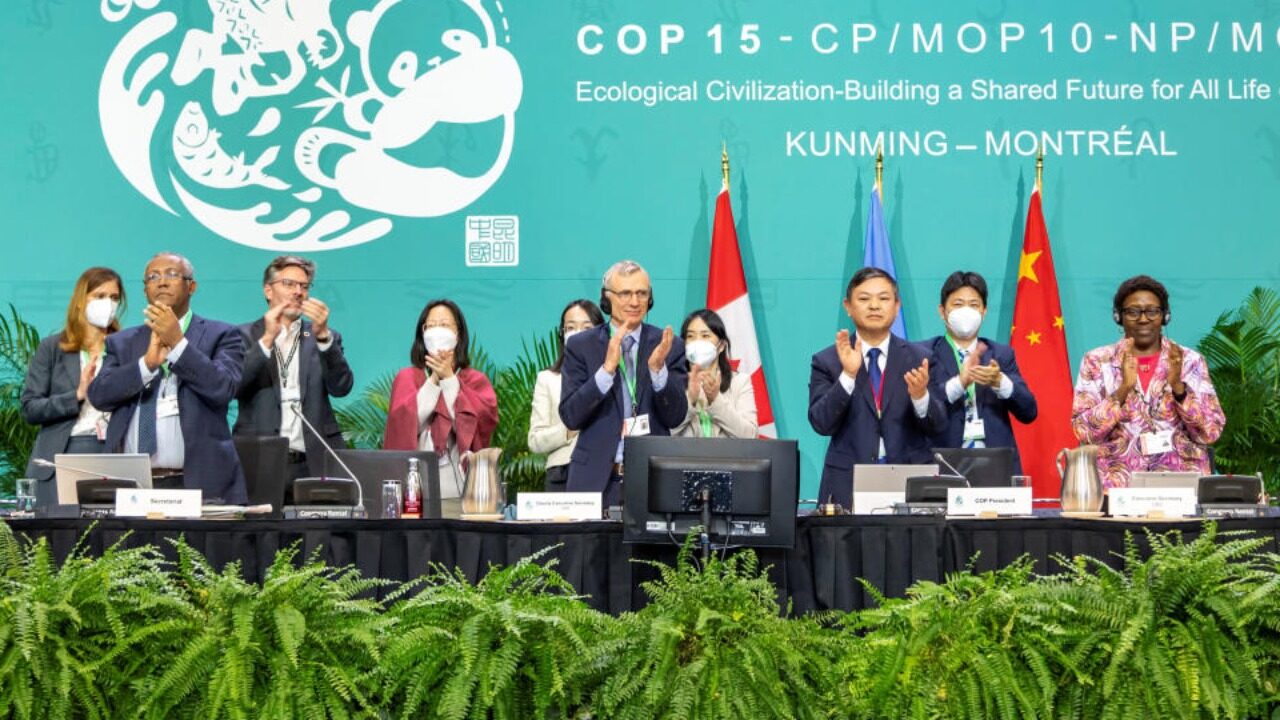
MONTREAL, Canada: The countries have reached a consensus resulting in a historic deal on Monday, December 19, at the 15th Conference of Parties (COP15) held in Montreal, Canada, regarding the conservation of land, ocean, and providing finance for the conservation of biodiversity in the developing countries.
The framework was adopted on the last day of the United Nations Biodiversity Conference or COP15. China, which currently holds the chair, came up with a draft on Sunday, December 18, that provided the much-needed momentum to the ongoing contentious talks.
Just before the deal was approved, amidst applause from the participants, Huang Runqiu, Minister for Environment, China, said, “We have in our hands a package which, I think, can guide us as we all work together to halt and reverse biodiversity loss and put biodiversity on the path to recovery for the benefit of all people in the world.”
Bhupender Yadav, Minister for Environment Forest and Climate Change, Government of India, who partook in the negotiation, informed The Hindu that in a broader perspective, the agreement is positive in nature as far as the interests of India are concerned.
Yadav presented India’s stand during the negotiation on Saturday, December 17, regarding the goals and targets, which were to be adopted later in the summit and said that the target needs to be ambitious, as well as “realistic and practical.”
Yadav highlighted the principle of climate justice wherein countries responsible for high historical emissions must provide financial assistance for the remedial measures to be adopted in developing countries, and the same principle needs to be applied to the conservation of biodiversity. He also talked about the need for a Global Biodiversity Fund and rejected the idea of phasing out agricultural subsidies, which were part of the draft text of the agreement.
The draft agreement also included recommendations to reduce overall risk from pesticides and hazardous chemicals by at least 50 per cent by 2030.
But the most significant part of the agreement is the commitment for the conservation of 30 per cent of land and water, significant for the conservation of biodiversity. Right now, only 17 per cent of land and 10 per cent of the marine landscape is protected.
The agreement also includes a call to raise $200 billion for the conservation of biodiversity, along with a variety of measures to phase out or streamline subsidies which will help raise another $500 billion. The financial package also asks for increasing the amount by at least $20 billion annually by 2025 and $30 billion by 2030 for poor countries.
Financing was the most contentious topic at the summit. Several countries from Africa stalled the summit talks for almost nine hours as they were demanding the creation of a new fund, but in the end agreed on the creation of a fund under the ambit of the existing Global Environment Facility (GEF).
Christophe Béchu, Minister for Ecological Transition, France, said, “Creating a fund under the GEF is the best way to obtain something immediate and efficient” and the creation of a new fund would take several years while the developing countries need immediate money for the protection of biodiversity.
Steven Guilbeault, Minister of Environment and Climate Change, Canada, said, “We have 30 by 30. Six months ago, who would have thought we could 30 by 30 in Montreal? We have an agreement to halt and reverse biodiversity loss, work on restoration, and reduce the use of pesticides. This is tremendous progress.”
Some estimates in 2019 warned that one million plant and animal species would face extinction within the next few decades at a rate which is 1,000 times greater than expected. Humans use around 50,000 wild species, and one out of five of the world’s population depends on these species for food and income.

